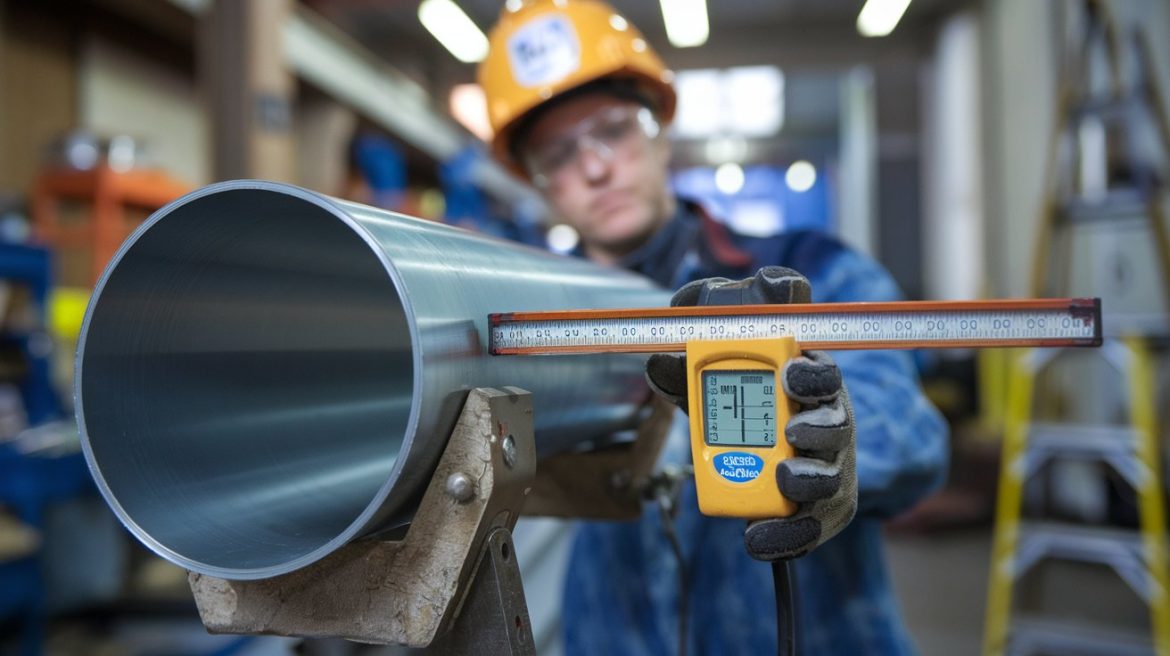Did you know the hidden and important factor that ensures the optimal performance of the piping systems? These are the pipe specifications, defined as inner and outer diameter (ID and OD), the wall thickness, pressure rating, etc. Whether for schedule 40 pipe or any other, these specifications are very important to consider as they determine the efficiency and performance criteria of many industrial projects. But what exactly are these and how do these factors affect the overall performance of the piping system?
This article will cover a brief overview of Schedule 40 Pipe’s specifications; including key dimensions, wall thickness, and pressure calculations.
What Does NPS mean?
The NPS system is a standard system that provides the inside diameter of the pipe, not the outside diameter. Let’s say in the set if the Schedule number is changed, it affects the inside diameter or ID, but it doesn’t affect the outside diameter or OD. Iron pipe sizing (IPS) was replaced in the American Standard Association with Nominal Pipe Sizing (NPS) in 1927. For pressure and temperature, North American standards are used.
What Is OD & ID?
OD and ID are the outer diameter of the pipe and the inner diameter of the pipe, respectively.
OD: the diameter calculated from the diagonal measuring of the pipe, including the thickness of the pipe is OD.
ID: the diameter calculated from the diagonal measuring of the pipe, Excluding the thickness of the pipe is ID. OD and ID are like measuring the Pipes from the outside and inside respectively.
Key Specifications of Schedule 40 Pipes
According to the standards, below are some important Schedule 40 Pipe Specifications to ensure compatibility with all fittings and valves.
Dimensions and Wall Thickness
The dimensions of Schedule 40 pipes differ depending on their NPS. Going through the table below can help in understanding how NPS affects other parameters/specifications.
|
Nominal Pipe Size (inches) |
Inner Diameter (ID) inches |
Outer Diameter (OD) inches |
Wall Thickness |
|
½ |
0.622 |
0.840 |
0.109 |
|
¾ |
0.824 |
1.050 |
0.113 |
|
1 |
1.049 |
1.315 |
0.133 |
|
1.5 |
1.610 |
1.900 |
0.145 |
|
2 |
2.067 |
2.375 |
0.154 |
|
3 |
3.068 |
3.500 |
0.216 |
|
4 |
4.026 |
4.500 |
0.237 |
|
6 |
6.065 |
6.625 |
0.280 |
|
8 |
7.981 |
8.625 |
0.322 |
Weight Calculations
Below is the formula for calculating the weight of the pipes:
Weight / ft (Ibs) = ((outer diameter – thickness of wall) * wall thickness) * 10.69
Weight per foot (lbs.) = (OD – Wall Thickness) * Wall Thickness * 10.69
- This formula is given by NASPD (National Association of Steel Pipe Distribution).
- This formula gives the weight of steel pipe per foot.
Following is a weight chart steel Schedule 40 chart
|
Nominal pipe Size |
Inner Diameter (ID) (unit = inches) |
Outer Diameter (OD) (unit = inches) |
Wall Thickness (unit = inches) |
Weight (unit = lb.) |
Maximum pressure (unit = psi) |
|
⅛” inches |
0.269 inches |
0.405 inches |
0.068 inches |
0.24 lb. |
810 psi |
|
¼” inches |
0.364 inches |
0.540 inches |
0.088 inches |
0.42 lb. |
780 psi |
|
⅜” inches |
0.493 inches |
0.675 inches |
0.091 inches |
0.57 lb. |
620 psi |
|
½” inches |
0.662 inches |
0.840 inches |
0.109 inches |
0.85 lb. |
600 psi |
|
¾” inches |
0.824 inches |
1.050 inches |
0.113 inches |
1.13 lb. |
480 psi |
1 inch = 25.4 mm
1 psi (lb /in2) = 6894.8 Pa (N/m2) = 6.895 * 10-2 bar
3. Pressure Ratings
Pressure depends on the materials; if the material changes, so does the pressure, and also the weight affects the pressure. For example, Schedule 40 PVC pipes have low-pressure ratings in comparison to Schedule 40 steel pipes because steel is hard material compared to PVS.
Pressure Rating (PSI) of different pipe materials:
- PVC Schedule 40 pipe: 120 to 450
- Carbon Steel Schedule 40 pipe: 1,000 to 2,000
- Stainless Steel Schedule 40 pipe: 1,500 to 3,000
Conclusion
The specifications described above (OD, ID, NPS, wall thickness, and pressure ratings) are very essential to ensure that the piping systems are compatible with the optimal and required performance criteria. These factors not only affect how scheduled 40 pipes work optimally for valves and fittings but also determine their capacity to withstand temperature and pressures. Engineers can also make reliable decisions based on accurate calculations and specifications. This will save money, and time and ensure performance criteria of the piping system as well as reliability and safety.
